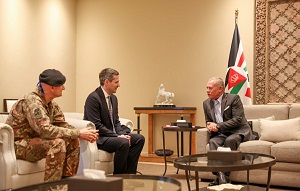Rethinking value-added taxes for developing economies , Project Syndicate
ABIDJAN/CLERMONT-FERRAND/OXFORD — The value-added tax (VAT) is one of the most widely implemented tax innovations of the past 70 years. First piloted in the early 1950s in Côte d’Ivoire – then a French colony – and gradually introduced across France from 1954 until its formal adoption in 1966, it has since been embraced by 175 countries, with the notable exception of the United States. In many developed and developing economies, it is the leading source of tax revenue, surpassing both corporate and personal income taxes.
The VAT’s global appeal lies in its intrinsic features. As a tax on final household consumption, it provides governments with a stable revenue base. Its debit-credit mechanism, applied throughout the value chain, prevents the cumulative tax burden that was once common with turnover and sales taxes. This method not only ensures neutrality but also strengthens compliance: by cross-checking transactions between suppliers and customers, the VAT generates a more reliable revenue stream even in cases of business failure or fraud.
The spread of the VAT has been closely tied to trade liberalization, as developing countries reduced tariffs and became integrated into the global economy. With tariff revenues shrinking, the VAT – anchored in domestic consumption and collected at the border – offered a powerful substitute capable of offsetting and even surpassing lost customs revenue.
But after decades of widespread use, the VAT warrants reassessment. As our recent study shows, its results have been mixed. In developed economies, it has been effective at boosting tax revenue, supporting industrialization, and promoting diversification. In resource-rich developing countries, by contrast, it has not delivered the expected benefits, failing to make up for lost tariff revenues and leaving governments with significant fiscal shortfalls.
With donor governments slashing foreign-aid budgets, the need to mobilize domestic resources, primarily through taxation, has become increasingly critical. This urgency was reaffirmed at the Third International Conference on Financing for Development in Addis Ababa in 2015 and July’s Fourth Conference in Seville. Both gatherings highlighted domestic revenue as crucial for achieving the United Nations’ 2030 Sustainable Development Agenda.
Beyond its impact on tax revenues, the VAT has had unintended structural consequences for resource-rich developing countries. By design, the VAT applies only to domestic consumption; exports are exempt. Under the destination principle, exporters are even entitled to full refunds on VAT paid for equipment and intermediate goods.
Combined with tariff reductions, this framework has lowered the cost of resource extraction and deepened these countries’ reliance on unprocessed raw material exports such as oil and minerals rather than fostering industries that could add value. The result has been the “resource curse”: a self-reinforcing cycle of limited diversification and economic underdevelopment.
Our findings point to a fundamental issue: tax systems cannot simply be transplanted wholesale from one economy to another. For this reason, the VAT has undergone numerous adaptations since its inception in the early 1950s to reflect different national contexts.
China offers a telling example. When the country introduced a VAT at a rate of 17% in 1994, it initially adhered strictly to the destination principle, granting exporters full refunds on VAT paid for inputs and equipment. Just two years later, however, the Chinese government began restricting VAT refunds on certain exports in response to significant budgetary pressures.
Over time, what began as an emergency measure evolved into an explicit instrument of Chinese industrial policy, used alternately to encourage exports and boost tax revenue, depending on economic circumstances. In December 2024, for example, China halted VAT reimbursements for copper and aluminum exporters. While this raised the cost of shipping these raw materials abroad, it also created powerful incentives to process them domestically, allowing China to capture greater value within its own supply chain.
China’s experience offers a useful model for resource-rich countries seeking to adjust their VAT to meet fiscal and developmental objectives. It demonstrates that, with careful design and implementation, such taxes can be reshaped to promote industrialization, foster diversification, and achieve long-term economic stability.
For developing economies – many of which now grapple with severe budget constraints and the need to create productive, well-paying jobs for growing populations – the lesson is clear: to break the cycle of dependence that holds them back, they must reform the VAT.
Rabah Arezki, a former vice president at the African Development Bank, is Director of Research at the French National Center for Scientific Research (CNRS) and a senior fellow at Harvard Kennedy School. Grégoire Rota-Graziosi is Professor of Economics at Clermont-Auvergne University. Rick van der Ploeg is Professor of Economics at the University of Oxford and University Professor of Environmental Economics at the University of Amsterdam. Copyright: Project Syndicate, 2025. www.project-syndicate.org
Latest News
-
 King receives Italy’s undersecretary of state for defence, chief of defence staff
King receives Italy’s undersecretary of state for defence, chief of defence staff
-
 Infantino introduces FIFA Peace Prize with Trump as likely recipient
Infantino introduces FIFA Peace Prize with Trump as likely recipient
-
 King directs government to expand Samih Darwazah Oncology Centre at Al Bashir Hospital
King directs government to expand Samih Darwazah Oncology Centre at Al Bashir Hospital
-
 Lebanon, Israel hold first direct talks in decades
Lebanon, Israel hold first direct talks in decades
-
 Nashama open Arab Cup campaign with 2–1 win over UAE
Nashama open Arab Cup campaign with 2–1 win over UAE